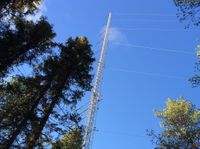AIR QUALITY & ATMOSPHERIC SCIENCE
Atmospheric science focusses on precise measurements of gases, amongst them greenhouse gases. Air quality analysis and emission monitoring brings more insight on the degree of pollution in the air; globally or locally.
Atmospheric science
Precise measurements of greenhouse gases, such as carbon dioxide, methane, nitrous oxide and water vapor, are a major focus of atmospheric science. There are many observation networks, such as ICOS, Earth Networks and WMO-GAW (Global Atmospheric Watch), that have deployed quite a number of monitoring stations all over the world, which are equipped with analyzers that continuously measure greenhouse gas concentrations. These monitoring sites include baseline observatories and tall towers, but also aircraft and balloon sampling systems.
To distinguish between the different sources (and sinks) of greenhouse gases (e.g. biogenic vs. petrogenic hydrocarbons), stable isotope measurements need to be performed.
Air quality & emission monitoring
Air quality analysis includes the measurements of pollutants in the air, such as carbon monoxide, carbon dioxide, methane, nitrogen oxides, sulfur oxides, hydrogen fluoride, formaldehyde, ammonia and many other (VOC) gases. The quality of air can be affected by natural processes, such as forest fires and vulcanic eruptions, and human influences (industry, exhaust from vehicles, raising livestock). Continuous monitoring of air pollutant concentrations help researchers, plant operators and regulators to better understand the air quality in a room or environment.
Instruments can be installed on a fixed location, or used in a mobile configuration, e.g. mounting it on a vehicle for fenceline measurements or on an airplane for urban mapping/vertical profiling.
Examples of monitoring sites are:
-landfills and wastewater treatment plants measuring CH4 (or other VOC) fluxes
-fracking/drilling and CO2 sequestration sites measuring methane and carbon dioxide fluxes
-cities measuring concentrations of nitrogen oxides, carbon dioxide/carbon monoxide and other polutants
-agricultural facilities measuring ammonia fluxes
-factories (in- and outdoor) measuring Volatile Organic Compounds (VOC's), hydrogen fluoride, hydrogen sulfide or formaldehyde concentration
